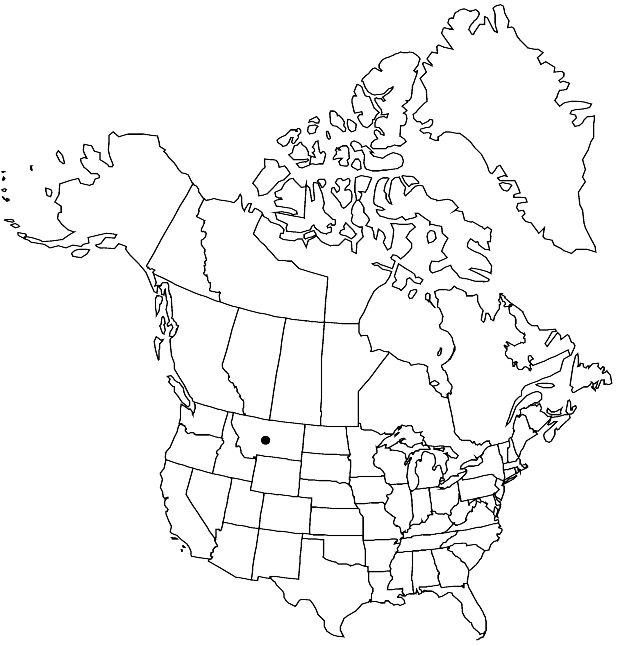Draba daviesiae
Contr. Gray Herb. 214: 5. 1984.
Perennials; (densely pulvinate); caudex branched (branches elongated, loose, with persistent leaf remains, terminating in flowering or sterile shoots); scapose. Stems unbranched, (0.05–) 0.2–0.6 dm, glabrous. Basal leaves (densely imbricate); rosulate; petiolate; petiole ciliate throughout; blade (fleshy), oblong to obovate or oblanceolate, 0.3–0.7 (–1) cm × 1–2 (–2.5) mm, margins entire, (ciliate, trichomes simple, 0.1–0.5 mm, apex obtuse), surfaces glabrous (midvein obscure abaxially). Cauline leaves 0. Racemes 2–8 (–10) -flowered, ebracteate, (subcorymbose), slightly elongated in fruit; rachis not flexuous, glabrous. Fruiting pedicels divaricate-ascending (not decurrent basally), straight, 4–10 mm, glabrous. Flowers: sepals oblong, 1.5–2.2 mm, glabrous; petals pale to bright-yellow, spatulate, 3.5–4 × 1–2 mm; anthers ovate, 0.3–0.4 mm. Fruits ovate to oblongelliptic, plane, flattened, 4–8 × 2–4 mm; valves (obscurely veined), glabrous; ovules 6–14 per ovary; style 0.1–0.5 mm. Seeds ovoid, 1.2–1.5 × 0.8–1 mm.
Phenology: Flowering Jul–Aug.
Habitat: Talus slopes, rock crevices and cracks, rocky ridges and slides, alpine meadows
Elevation: 2700-2900 m
Discussion
Although originally described as a variety of Draba apiculata (= D. globosa), D. daviesiae is distinct morphologically. It is easily distinguished from the former by its densely pulvinate habit, obtuse leaf blades, and obscurely veined fruit valves. By contrast, D. globosa exhibits a cespitose but non-pulvinate habit, acute leaf blades, and prominently veined fruit valves. Draba daviesiae is known from the Bitterroot Mountains in Ravalli County.
Selected References
None.
Lower Taxa
"elongated" is not a number."thick" is not a number."dm" is not declared as a valid unit of measurement for this property."dm" is not declared as a valid unit of measurement for this property.
